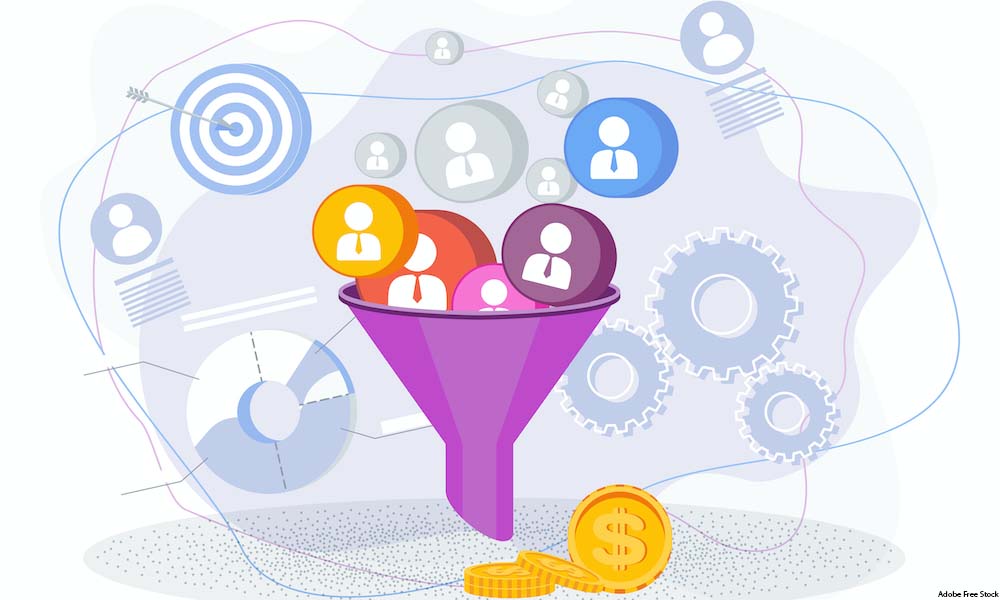Sales
Customer Acquisition Marketing Tips: 6 Steps

There are hunters and farmers in sales teams. The farmers are also called account managers, and their role is to ‘farm’ or nurture the relationship with the existing customers so they buy more. Therefore, the account manager should know in what direction the customer is taking their business and get on well with the key stakeholders and decision-makers.
On average, two-thirds of all sales come from existing customers, so it’s wise to have expert account managers in your sales team.
However, customer attrition, i.e., loss of customers, must be replaced and more added to grow. This is where your hunters, i.e., new customer acquisition salespeople, are available.
The customer acquisition process typically comprises a six-step process identified mainly by a sales funnel. The firm should identify and design each stage of the sales funnel. The firm can then use this funnel to identify weak areas to work on to enhance the performance of the business.
While many marketers argue that the sales funnel is no longer necessary, this is contrary to the truth because the funnel is crucial. Understanding how different types of content reach other parts of the sales funnel is vital when developing an effective customer acquisition marketing plan.
6 Steps to Customer Acquisition Marketing
Here are the six steps the business must go through to attract people to its site and turn them into paying clients using content.
The majority of people follow the same routine before making a purchase. If the business succeeds, another opportunity will arise.
Step 1: Create Brand Awareness
Since this is the first time people have heard of or seen the brand, this is a fantastic opportunity to educate them about critical concerns affecting them or their organization. When individuals inquire about important topics to them and the business, they find your business relevant to them, and they are starting to build trust in the company.
As a result, search engines must easily discover the brand’s content while simultaneously entertaining and educational to sustain the reader’s interest.
A prudent option would be writing and distributing relevant information on other websites. The best bet is to ascertain where and how the clients spend their web time and obtain their news. Then, concentrate on getting ahead of them with the brand’s content.
The goal is to move people from ignorance to enhanced knowledge about the company.
Step 2: Spike Interest
In one way or another, a potential customer has contacted the brand. At this stage, please take advantage of their enhanced attention span and make them receptive to what the brand offers.
Utilize video and social media content to excite their interest and demonstrate the brand’s product or service benefits.
Step 3: Consideration
Even if leads are not yet ready to buy, their consideration of the brand brings them closer. It is critical that the content present at this level is more thorough and demonstrates how the brand’s solution may help solve a particular problem.
The content has already been viewed and possibly interacted with by prospects. Given that they are already aware of the business and believe the product may be worthwhile, the next thing they will want to know is whether they can trust the firm.
This is where most of the company’s time and money should be invested. The firm must develop premium content, differentiate it from competitors, and showcase its sector expertise.
The business can earn the lead’s trust by providing free guidance, such as how-to blog posts, case studies, videos, and e-books.
While all businesses need sales and profit, customer communication is service-oriented, with discounts and loyalty bonuses for purchases and loyalty.
Step 4: Intent
Once the brand has established its competence and willingness to assist, consumers will be more interested in the product. However, this does not mean the prospects are prepared to buy.
The business must demonstrate that it is a sound business decision to persuade them to purchase from the company. As a result, the next step is to explain why they should choose the company over its rivals. At this point, the brand must supply more specific content.
Step 5: Evaluation
Potential customers are now only a few clicks away from securing their purchase. Using reviews, testimonials, product demonstrations, and comparison tables illustrate why the company’s product or service is superior.
Step 6: Purchase
People are on the verge of purchasing when they reach the bottom of a funnel. Often, all they need is a little poking.
Numerous tactics to speed the purchase include delivering content, free trials, gifts, discounts, and special offers.
Once a customer successfully purchases, the work does not end there. After acquiring a sizable number of new customers, the company must implement measures to retain them. Maintaining a customer is less time-consuming and costly than gaining a new one.
Customer Retention
There is tremendous competition for acquiring and retaining clients. Remember, all businesses fight for clients’ loyalty.
The following factors can make a customer go somewhere else.
Poor Customer Service
Customers want to feel important, which means all businesses can sharpen their customer service to retain business.
Loyalty goes both ways, i.e., brand loyalty and customer loyalty. Proactively collaborate and share knowledge and training to show you’re a ‘team’ working together for mutual benefit.
Product or Service No Longer Relevant
New customers may lose interest in the product or service if they do not obtain the guidance to use its products efficiently. With time, they may opt for other brands if they no longer find it enjoyable.
Complaints Are Not Handled Correctly
When consumers are continually obliged to write about the same complaint or their concerns are not satisfactorily addressed, they become irritated and frustrated. In the end, they may switch to another company or business.
Inconvenient Sales or Application Process
Customers must use and receive the benefits of their purchases as quickly as possible. Most customers may choose a less stressful brand if the company’s application process is cumbersome.
Conclusion
There is no perfect way to advertise a business, but customer acquisition and retention are critical elements in every industry. It’s beneficial to the company to create content for each level of the sales funnel.
Some prospects may not even begin at the top of your funnel and may not purchase until they reach the bottom. Keenly study the brand, understand the company’s dynamics, and choose what works for it and what does not.






